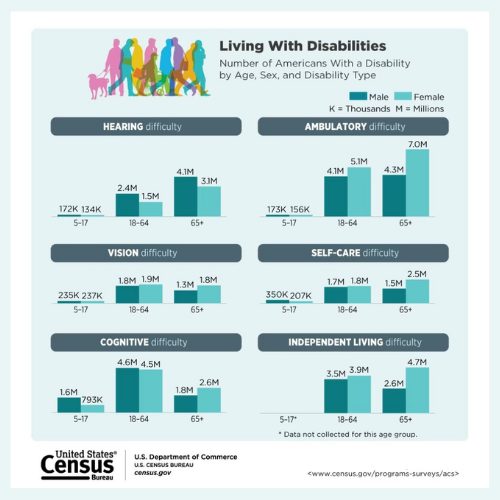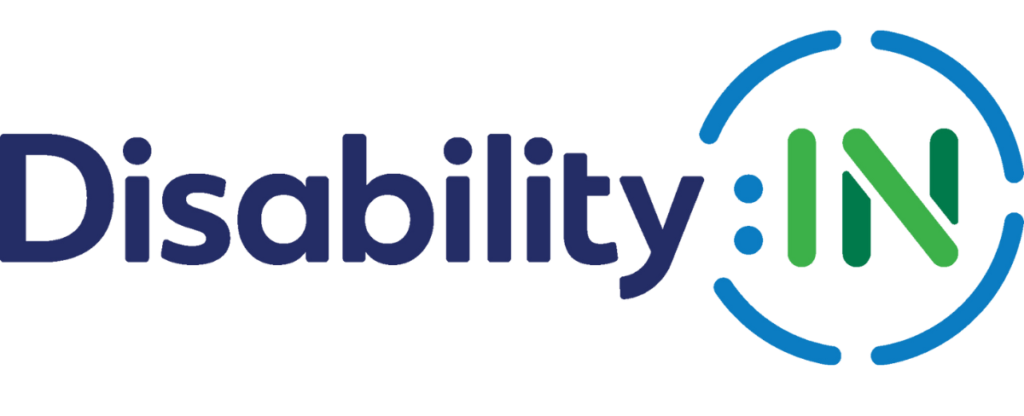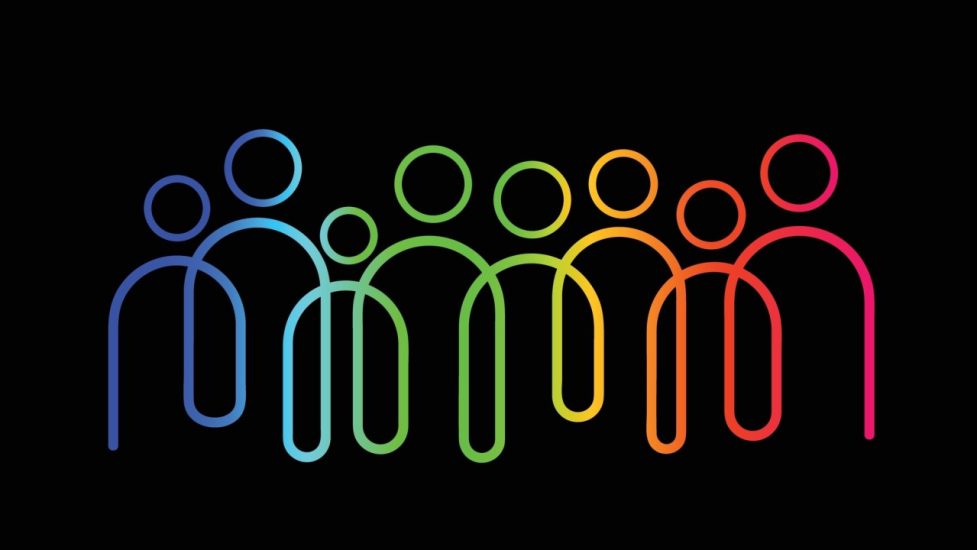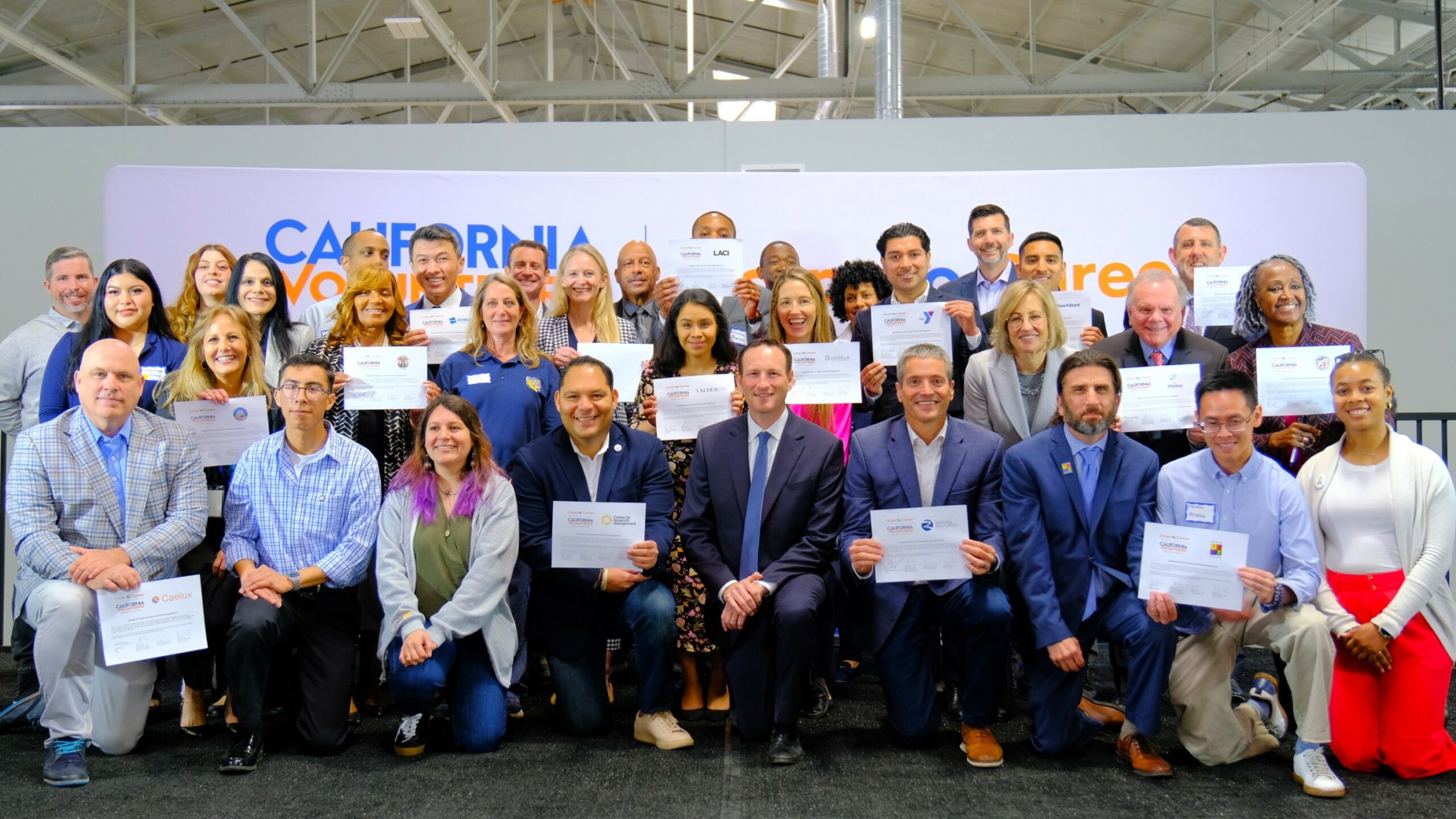33 years ago today, President George H.W. Bush signed the American with Disabilities Act (ADA) which makes it illegal to discriminate against people with disabilities in employment, public accommodations, transportation, communications, and access to government programs and services.

More than 42.5 million Americans, or 13% of the population, have some type of disability, according to the U.S. Census Bureau.
This includes difficulty with hearing, vision, cognitive, ambulatory, self-care, or independent living.
Despite laws against discrimination against people with disabilities in the workplace, people with disabilities are underemployed and underpaid.
Data from the Census Bureau shows that the median annual earning for workers with disabilities is around $28,000 compared to $41,000 for people without a disability.
SHRM, the human resources trade association, was among those groups and individuals that lobbied for policies, practices, and legislation to protect workers with disabilities.

“The ADA has transformed workplaces, created a more inclusive society, and fostered opportunities for millions,” says Emily M. Dickens, the chief of staff and head of public affairs for SHRM.
“As we applaud the progress made, we pledge to continue our journey towards an even more inclusive future.”
Not all disabilities are visible and new research released today by SHRM looks at the experiences of workers with disabilities that are hidden – often called invisible disabilities – and are not always obvious to others.
Reluctance to self-disclose
Invisible disabilities can take the form of cognitive, neurological, or health difficulties. Examples include diabetes, depression, obsessive-compulsive disorder (OCD), attention-deficit/hyperactivity disorder (ADHD), autism, and dyslexia.

“SHRM research reveals nearly half (47%) of workers with invisible disabilities have not disclosed their disabilities to their workplace, citing various reasons. Workers with invisible disabilities face unique challenges that must be addressed to curate more-inclusive workplaces,” according to the new research.
Among the reasons cited by the 47% for their reluctance or hesitancy to reveal their disabilities in the workplace:
- 34% believe their co-workers would scrutinize their behavior
- 31% believe their co-workers would think they can’t do their jobs fully
- 30% believe their co-workers would talk behind their backs
According to the research, “Those with invisible disabilities who have disclosed are around two to three times as likely to report experiencing incivility (rudeness, disrespect, or insensitive behavior) from their co-workers and supervisors compared to those without invisible disabilities.”
The report continues, “Although 72% of workers without invisible disabilities agree their work contributions are recognized by their leader, only 58% of workers with invisible disabilities who have not disclosed feel the same. Workers with invisible disabilities were nearly twice as likely to feel frequently (about once a week or more) excluded at work (15%) compared to those without an invisible disability (8%).”
The argument for self-disclosure
July is Disability Pride Month. Earlier this month in Orlando, WorkingNation attended the annual Disability:IN conference at which we spoke to corporate and nonprofit leaders about various issues that people with disabilities face in the workforce for our WorkingNation Overheard interview series.

Jill Houghton, the president and CEO of Disability:IN, is dyslexic. She tells us that there has been progress in disability inclusion in the workplace, but there is still work to do.
“When you can own your identity in the workplace and be proud, the workplace benefits. Ultimately, we know (that) when companies are inclusive of people with disabilities, including people with non-apparent disabilities, that they have better bottom lines.”
Ross Barchacky, head of partnerships for Inclusively, suffered traumatic brain injury and musculoskeletal injuries while serving in the military. He says people may be reluctant to disclose a disability, but an employee or job seeker self-identifying can result in an employer making accommodations to help that person reach maximum potential.
“Employers are willing to become a little bit more transparent themselves – talking about what their accommodations process is like, interviewing individuals from their organization and being able to have them share their stories, just standing up in an ERG [employee resource group] or a BRG [business resource group] where they might have a mentorship program, where people can get help through the onboarding process by somebody else with a disability within the organization.”
Kayley Petersen, senior manager of DEI at Discover Financial Services, self-identifies as neurodivergent. They note employees should feel safe to disclose their own disabilities in their workplaces.
“Persistent biases that create blockers for individuals with disabilities, I think come from misunderstanding and not getting proximate to the community. (Self-disclosure) is a big opportunity, not just at Discover, but in all companies to create psychological safety. When people do open up and do share that they have conditions to be met, the environment is able to meet them where they are, get them the accommodations, the accessibility, or have the conversations in order to create an environment where they can show up, be productive, and be their best selves.”
You can watch all the interviews from Disability:IN here.
You can watch, read, and listen to more WorkingNation coverage of workers with disability here.
The SHRM findings are based on a survey using the AmeriSpeak Panel, a probability-based panel funded and operated by NORC at the University of Chicago.











